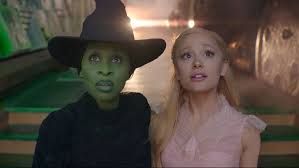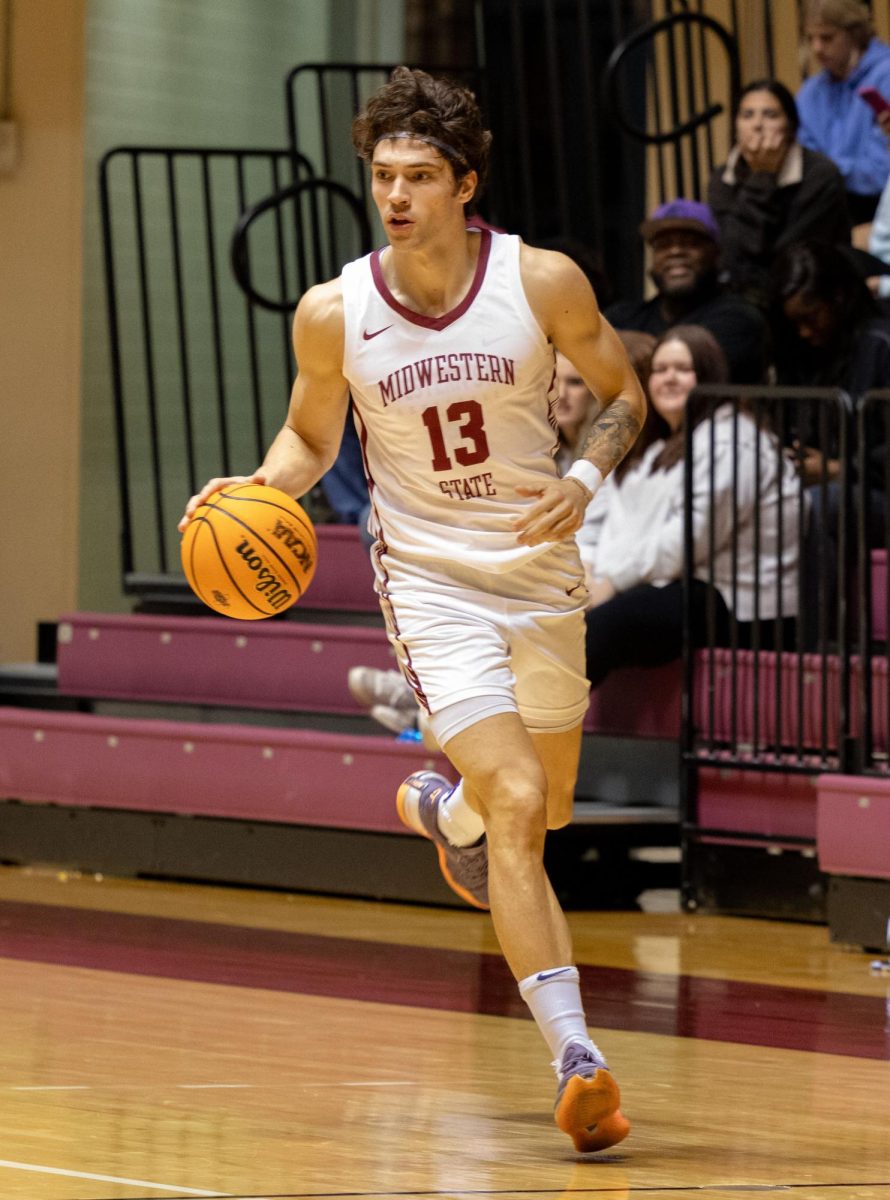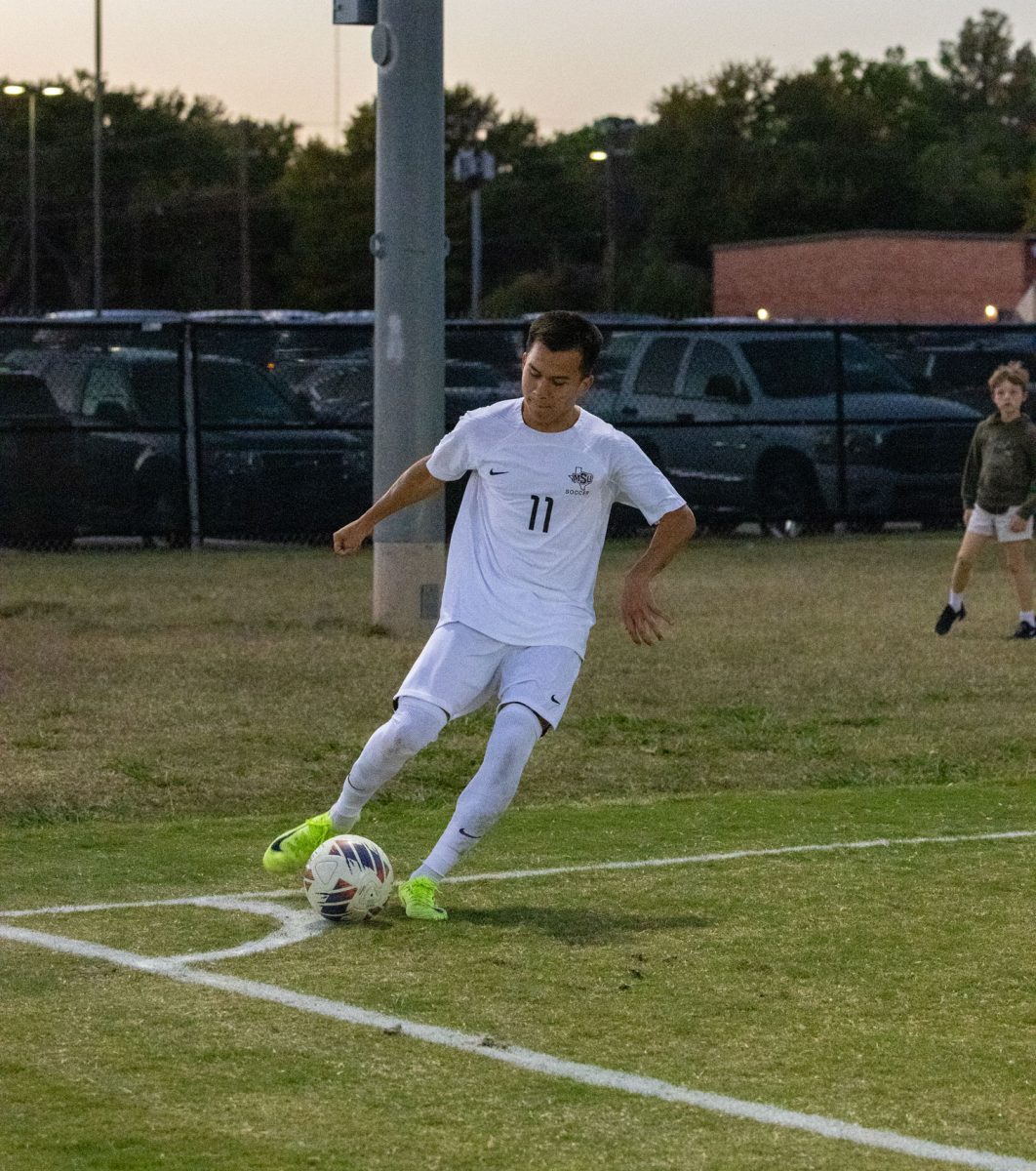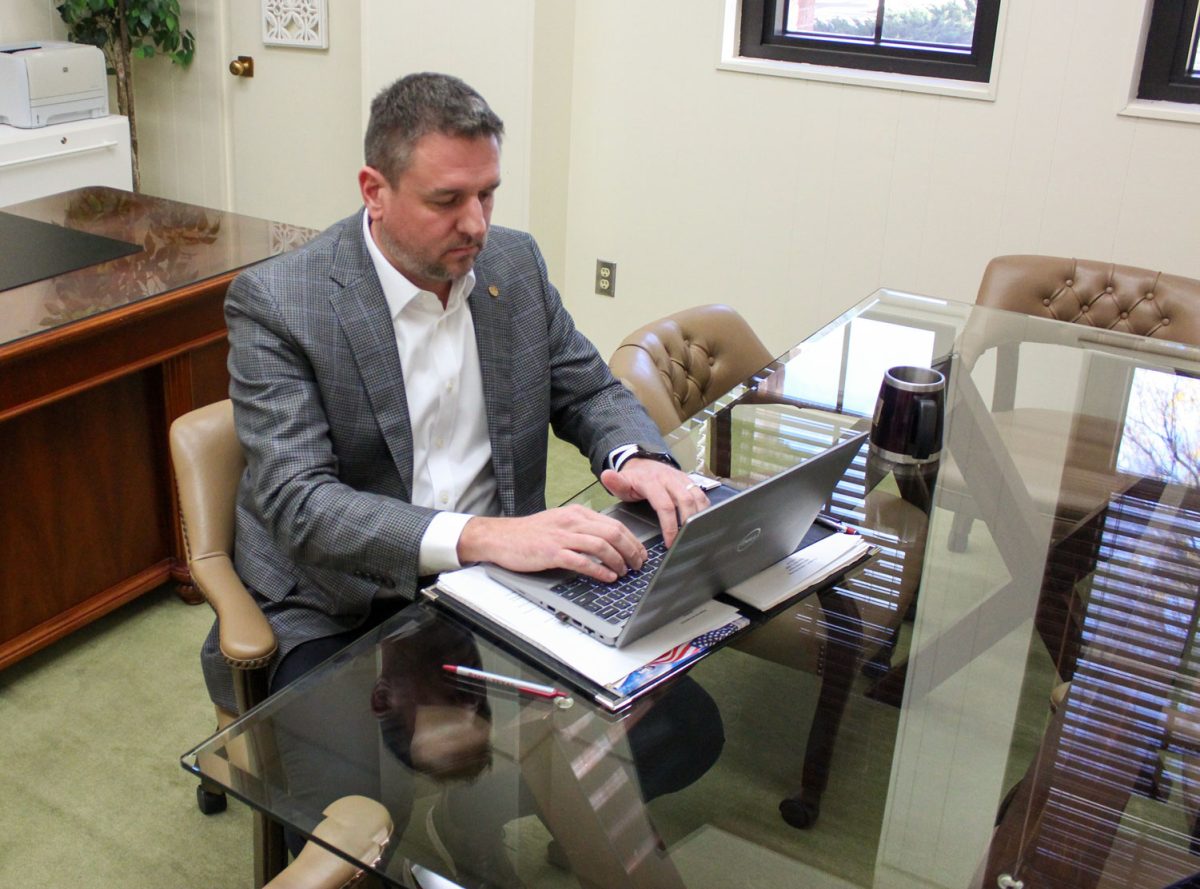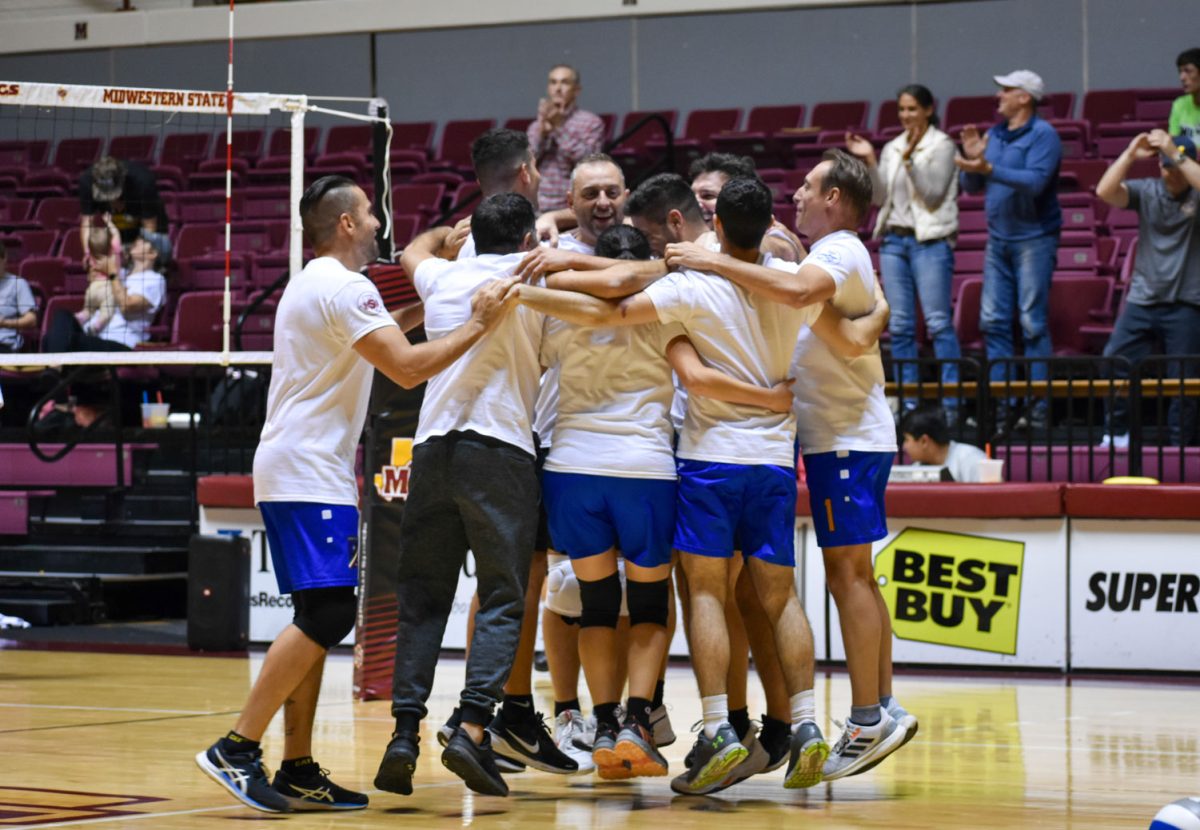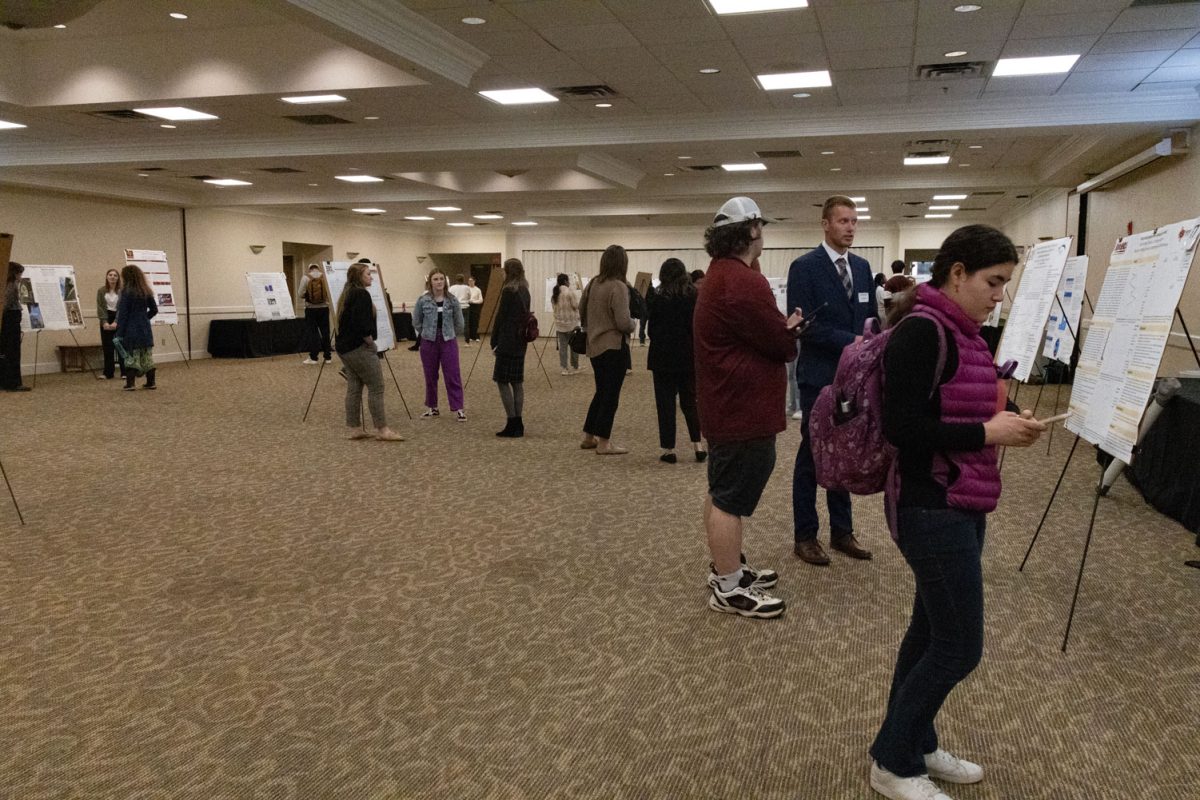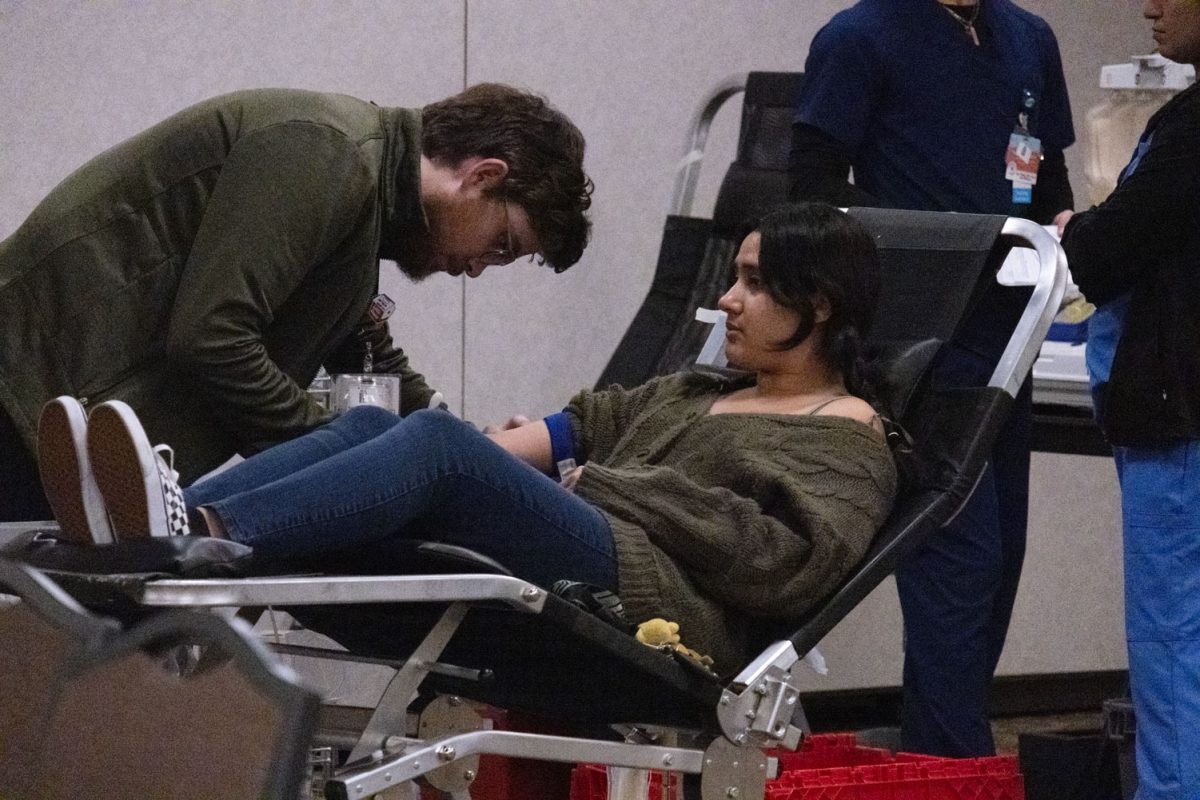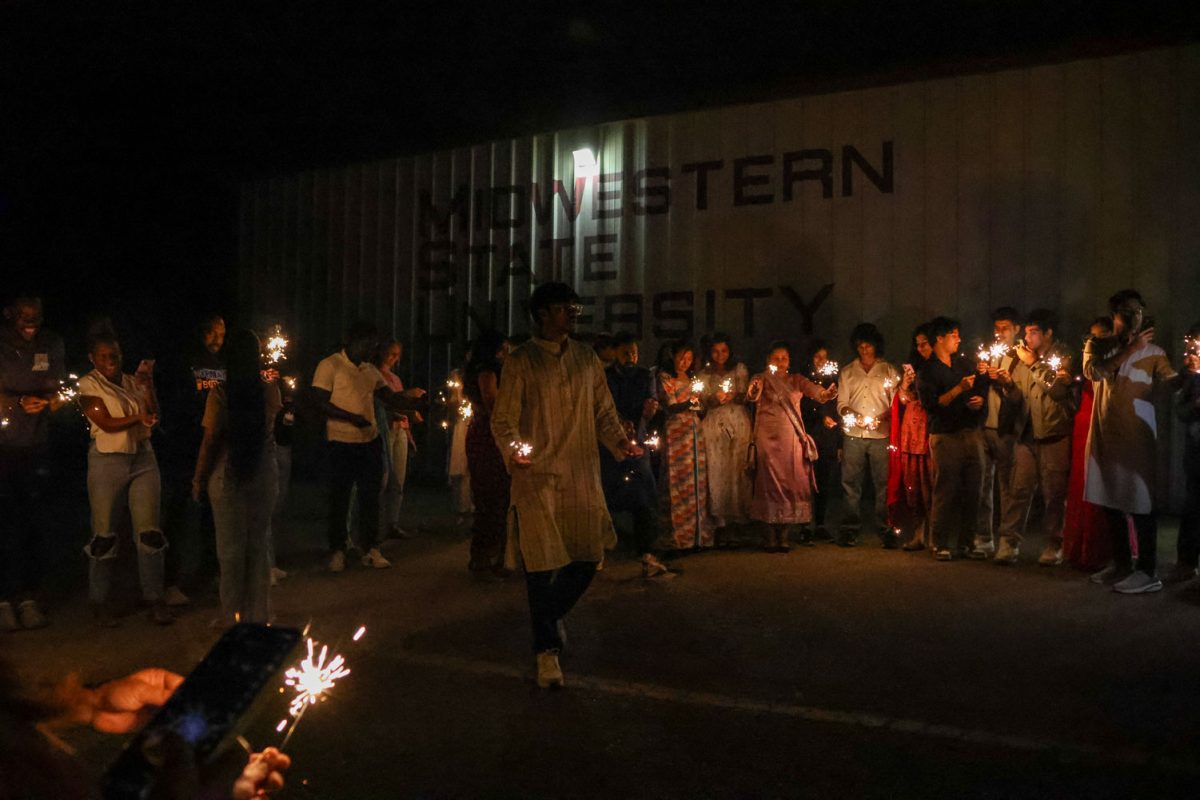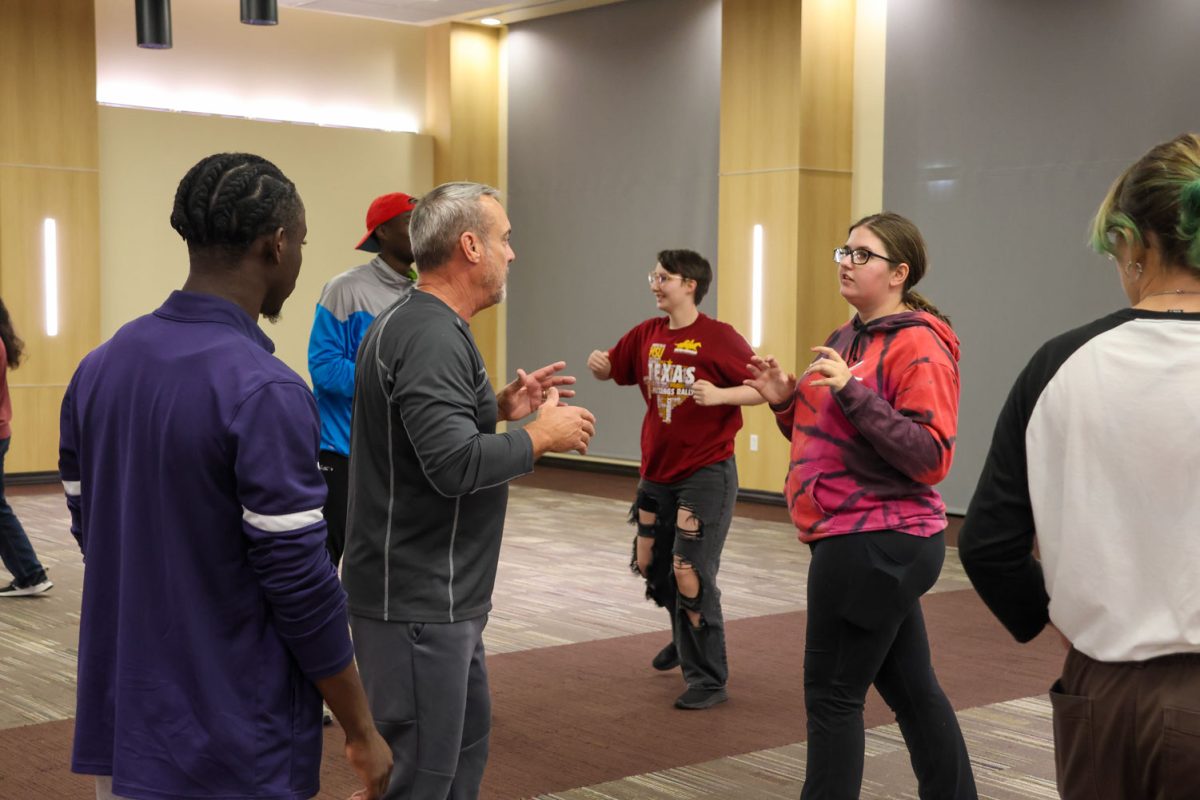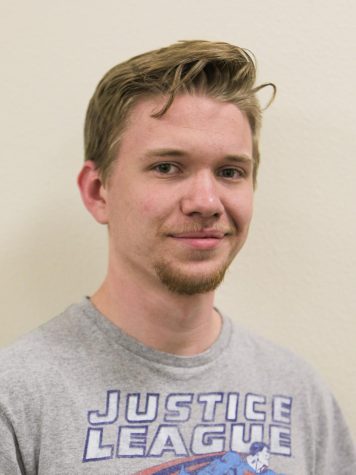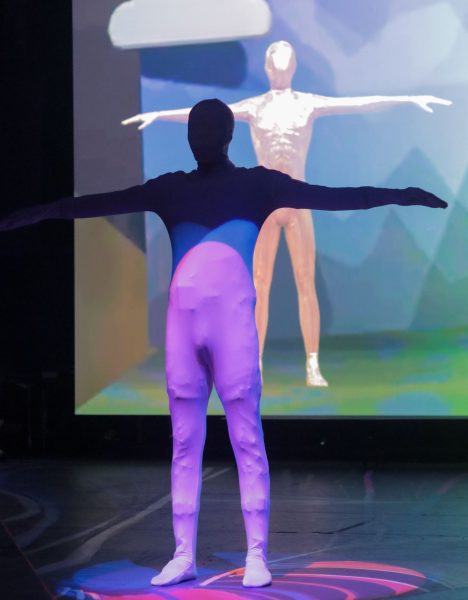
The theater department had its first showing of “Now. Here. This.” Thursday evening, but it wasn’t the only first of the evening. The play was the first the department has done that incorporated a motion capture suit, the result of a collaboration with the art department and professor Jason Bly.
Bly applied for a research grant for the suit, and said he has been exploring the suit’s applications ever since.
“I am entertaining my own whim and interests in video games and movies. And I teach figure drawing, and so part of my interest in the motion capture suit is how in my own classroom, I’ll be able to use that as a teaching component because I can record the live model that I would normally have in that traditional classroom,” Bly said.
The suit also served a wide variety of roles in the play, with the wearer doing everything from mimicking swaying flowers to interacting with vast cosmic sequences.
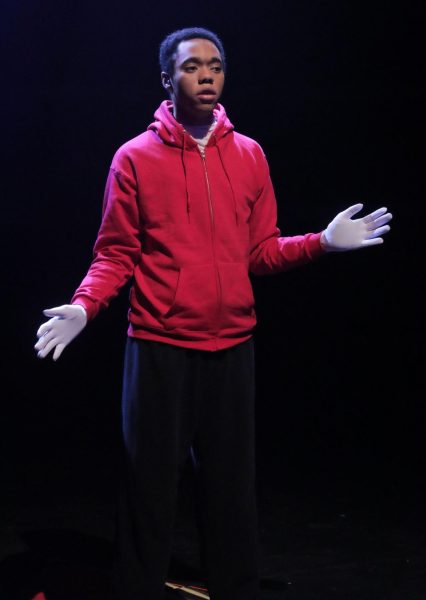
Theater junior Gerald Brooks, the student wearing the suit, was initially intrigued by the ability to use the motion capture technology since similar technology is often utilized by voice actors.
Brooks says he is interested in voice acting and has enjoyed the experience of acting in the suit.
“It’s honestly been super fun. I like doing, like, big movements wherever I act out the stuff for the screen. And sometimes it’ll show up on stage too. And it’s just really funny seeing the model move around,” Brooks said.
Eric Koger, chair and professor of theater design, was tasked with working out many of the details of adapting the technology to the stage, in addition to his normal role in running the technical side of the show.
Koger said adding the extra layer of the motion capture suit made the show more challenging to plan for.
“It’s a heavy tech show. We have a lot of light cues, lot of sound cues, we’re using wireless mics and we have video projection in there,” Koger said, adding, “We’ve got a bunch of pieces and parts that are being integrated on this particular show.”
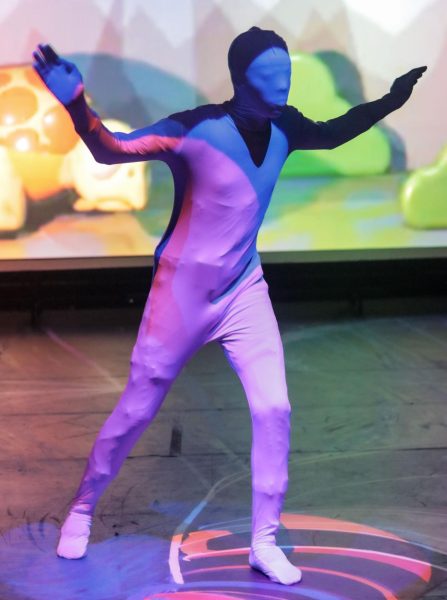
Bly said he also struggled to make adjustments on the technical side, but enjoyed the experience leading up the opening show.
“Well it’s a lot of fun. It’s a different ballgame for me because I work so much alone in my own personal work, paintings and the video work that I do is usually just by myself. And so working with a cast and crew, it’s a lot of adjustments because we’re making those adjustments in real time,” Bly said, adding, “But it is, it’s a fun circus to be part of that.”
Koger echoed Bly’s sentiment, and said working with the suit was similar to a Hollywood movie production.
“I’ve never seen it before, but it’s just like you would see, like, on the making of the Avengers or something with Mark Ruffalo playing the Incredible Hulk or something, you know?” Koger said.
The show itself centers around themes of self-discovery and enjoying the present. The play draws from the work of monk, activist and theologian Thomas Merton, who believed the key to happiness to be living in the present moment, at the present place and in the present happening.
Grace Edgar, assistant professor of theater, said the show strives to encapsulate that message.
“’Now. Here. This.’ is a contemporary broadway musical that centers around evolution and self-discovery that leads to self-acceptance. And the title ‘Now. Here. This.’ comes up in one of the scenes in the musical,” Edgar said, adding, “And if you can learn to be in the now, here, this, we will be free.”
Koger added the show draws from themes of modern conflicts.
“It’s modern and it has a lot of social issues that are present-day. So it’s kind of neat, which is why we chose the show,” he said.
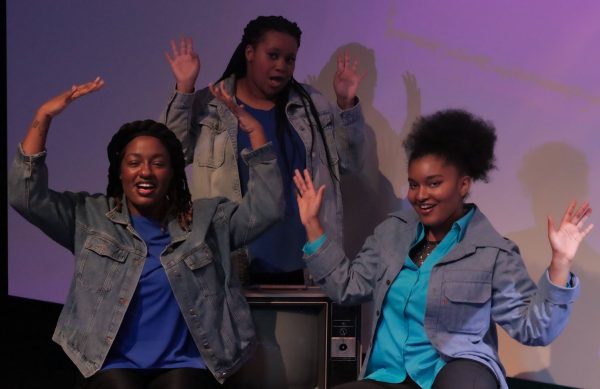
The technological and social themes combine to create a uniquely modern show.
Edgar said the work has been difficult, but fun.
“This is cutting-edge to put a motion capture suit in the present moment, in a live theatrical performance. And so we, it has been quite a process of trial and error,” Edgar said, adding, “It’s been fun to see Eric Koger and Jason Bly get really excited about the cutting edge technology. I’ve been really challenged because I think more conceptually than technically, so I’ve had to learn a lot about how technology works just to keep up in the conversations. It’s been exciting for our students as well.”






